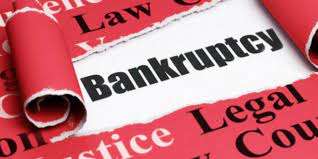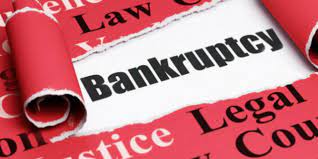Acts of Bankruptcy – s40(1)(a) Bankruptcy Act 1966.
How does a Bankruptcy Notices under the Bankruptcy Act 1966 work?
11 min read
Mark Smith : April 21, 2021 3:57:21 AM AEST

How does a Bankruptcy Notices under the Bankruptcy Act 1966 work?
(1) A debtor commits an act of bankruptcy in each of the following cases: ….
… (ha) if the debtor gives the Official Receiver a debt agreement proposal;
(hb) if a debt agreement proposal given by the debtor to the Official Receiver is accepted by the debtor’s creditors;
(hc) if the debtor breaches a debt agreement;
(hd) if a debt agreement to which the debtor was a party (as a debtor) is terminated under section 185P, 185Q or 185QA;
(i) if he or she signs an authority under section 188;
(j) if a meeting of his or her creditors is called in pursuance of such an authority;
(k) if, without sufficient cause, he or she fails to attend a meeting of his or her creditors called in pursuance of such an authority;
(l) if, having been required by a special resolution of a meeting of his or her creditors so called to execute a personal insolvency agreement or to present a debtor’s petition, he or she fails, without sufficient cause:
(i) to comply with the requirements of this Act as to the execution of the agreement by him or her; or
(ii) to present a debtor’s petition within the time specified in the resolution;
as the case may be;
(m) if a personal insolvency agreement executed by him or her under Part X is:
(i) set aside by the Court; or
(ii) terminated;
(n) if a composition or scheme of arrangement accepted by the debtor’s creditors under Division 6 of Part IV is:
(i) set aside by the Court; or
(ii) terminated;
(o) if the debtor becomes insolvent as a result of one or more transfers of property in accordance with:
(i) a financial agreement (within the meaning of the Family Law Act 1975); or
(ii) a Part VIIIAB financial agreement (within the meaning of the Family Law Act 1975);
to which the debtor is a party.
(2) In calculating for the purposes of subparagraph (1)(d)(i) the period for which property has been held by the sheriff, any time between the date on which an interpleader summons in respect of the property is taken out and the date on which the proceedings on the summons are finally disposed of, settled or discontinued shall not be taken into account.
(3) For the purposes of paragraph (1)(g):
(a) where leave is given by a court to enforce an award made on a submission to arbitration, being an award under which money is payable by a debtor to another person:
(i) the award shall be deemed to be a final order obtained by that person against the debtor; and
(ii) the arbitration proceedings shall be deemed to be the proceeding in which that final order was obtained;
(b) a judgment or order that is enforceable as, or in the same manner as, a final judgment obtained in an action shall be deemed to be a final judgment so obtained and the proceedings in which, or in consequence of which, the judgment or order was obtained shall be deemed to be the action in which it was obtained;
(d) a person who is for the time being entitled to enforce a final judgment or final order for the payment of money shall be deemed to be a creditor who has obtained a final judgment or final order;
(e) a judgment or order for the payment of money made by the Court in the exercise of jurisdiction conferred on it by this Act shall be deemed to be a judgment or order the execution of which has not been stayed notwithstanding that it may not be enforceable at law by execution; and
(f) an order made after the commencement of this paragraph under the Family Law Act 1975 for the payment by a person of arrears of maintenance for another person shall be deemed to be a final order against the first‑mentioned person obtained by the other person.
(4) The act of bankruptcy specified in paragraph (1)(j) shall be deemed to be committed on the day on which the notices calling the meeting are delivered or sent to the creditors or, if they are not all delivered or sent on the one day, on the day on which the last of the notices is so delivered or sent.
(5) The act of bankruptcy specified in paragraph (1)(l) shall be deemed to be committed on the day after the day on which the period within which the agreement is required to be executed by the debtor or the period within which the petition is required to be presented, as the case may be, expires.
(6) The act of bankruptcy specified in paragraph (1)(m) shall be deemed to be committed on the day on which the agreement is set aside or terminated, as the case may be.
(7) The act of bankruptcy specified in paragraph (1)(n) shall be deemed to be committed on the day on which the composition or scheme of arrangement is set aside or terminated.
(7A) For the purposes of paragraph (1)(o):
(a) transfer of property includes a payment of money; and
(b) a person who does something that results in another person becoming the owner of property that did not previously exist is taken to have transferred the property to the other person.
(8) This section applies, so far as it is capable of application, in relation to acts and things done or occurring, and omissions and failures to do acts or things occurring, before, or partly before and partly after, the commencement of this Act, as well as to acts and things done or occurring, and omissions and failures to do acts and things occurring, after the commencement of this Act.
Source: http://classic.austlii.edu.au/au/legis/cth/consol_act/ba1966142/s40.html
What is a Bankruptcy Notices under the Bankruptcy Act 1966? The Act defines Bankruptcy Notices as follows:
Do you have a problem with a Bankruptcy Notices? Have you been served a Bankruptcy Notices? Does someone owe you money and you’d like to issue a Bankruptcy Notices?
Any questions about Bankruptcy Notices? Live chat with us in the bottom right corner or call us on 1300-327123 till late, or alternatively complete the form below and we’ll reply to you promptly.
Watch our video tutorial, live chat with us in the bottom right corner or call us on 1300-327123 till late.
We offer a free first appointment to anyone who is in financial trouble and can assist and advise on any Bankruptcy Notices or a related matter. To book your free appointment – click here.

To learn more about Mark Smith, his training and expertise – click here to go to his profile page
Follow Mark on Twitter: https://twitter.com/mrmarkjsmith
welcome back to business asset protection, mark smith is my name. we’re up to part seven just of section 40 of the bankruptcy act, and there is we’re looking at acts of bankruptcy and there is heaps and heaps of these acts of bankruptcy and to be honest we could go for a week and and still probably not get through them all so today we’re just going to smash through the rest of them from section 40(1)(ha)
all the way through to section 40(8)
and there’s a lot to get through so strap on your seatbelt and here we go. well here we are section 40(1) of the bankruptcy act. a debtor commits an act of bankruptcy in each of the following cases …. now we’ve gone through a b c d e a double d a d e f g h and we’re now up to section HA if the debtor gives and look i’m sorry this will take we’ve got ages to go we’ve all got to go all the way down to h and i’m going to just skim through these and i apologize it is a skim if you’ve got any questions at all come to our website bottom right hand corner dcpartners.solutions and chat with us and what does part 2 of section 40 of the bankruptcy act what does section part 8 know mean? so by all means i understand it’s a scheme we’ll just go through these as quickly as we can and we’ll get through and any questions you’ll come come and talk to me offline we’re available anytime chat with us using the chat tools or call us on 1-300-327-123 now let’s have a look at section ha if a debtor gives the official receiver that’s a mob called afsa afsa.gov.ou a debt agreement so there are these are acts of bankruptcy and once you commit them you cannot go back from them, so very very important that you know that it is an act of bankruptcy and then you know that the what the consequences might be so a debt agreement now we’ll look at debt agreements later in our coverage of the bankruptcy act we’re only looking at what are acts of bankruptcy. so if you’ve got any questions about debt agreements or any of the other things that you come across coming through the rest of this particular video message me offline. hb if a debt agreement proposal is given by the debtor to the official receiver so again official receiver is afsa.gov.au this is out and it’s accepted by your creditors well that’s an act of bankruptcy as well so giving and then if you breach that hc if you breach that well another act of bankruptcy if and so these can you can see that these can accumulate so you might commit an act by giving the official receiver hi giving the official receiver debt agreement proposal but then if you breach it there’s another act of bankruptcy and so you can see that all of these ongoing acts a creditor if you don’t keep your end of the bargain hey credit i can use that against you in a creditor’s petition and we are going to have a look at creditors petitions that’s why we need to wrap this up if you hc if the debtor breaches a debt agreement well there you go that is a an act of bankruptcy hd if a debt agreement to which the party the debtor party was a party is terminated. so if you cease your obligations under that agreement another act. I – if he or she signs an authority under section 188 we’ll look at one section 188 now at the bottom of this particular blog or maybe it’s right at the very top of the of www.dcpartners.solutions of the particular blog that you might be looking at on on on this video you’ll see a link to section 188 so a tag a tag and so you can go and there’s a tag for date agreement there’s a tag for acts of bankruptcy so if you want to go back and see all the different extra bankruptcy use those tags aye did we look at that if he or she signs an authority under section 188 so what does that mean we’ll go to the tag above and look at the section 188 comments now at the moment there is no section 188 comments but they’re coming so this is a ongoing process. J if a meeting of his or her creditors is called in pursuance of such an authority. some of these things might make a bit more sense using the tags K if without sufficient cause he or she fails to attend a meeting of his or her creditors in pursuance of such an authority. so are you getting the gist that once you once you’re into this process of a formal process of insolvency, there are a number of potential acts of bankruptcy that can be used and no 99% of the acts of bankruptcy that are relied on in the courts is the failure under under a bankruptcy notice that’s s40(1)(g) – 99% we’ll just go back up to that 99% maybe 98% of the ones where someone does go bankrupt, happen when happened when you’ve issued a bankruptcy notice and a demand here … ralph plays $106,551 and they fail okay so 99 98 are of that kind. the other 2% percent as i said relate to some of these i guess more obscure methods of committing acts of bankruptcy and they are nevertheless acts of bankruptcy which the courts can use to issue what’s called a sequestration order. so that’s a new concept and there’s a tag above not on youtube but on our web page so go to our web page dcpartners.solutions and this particular blog has a tag for what a sequestration so there will be more and more of these posts and blogs and explanations about sequestration and other other things l where did we get to sorry did we get to k? L if having been required by a special resolution of meeting me of a meeting of his or her creditors to execute a personal insolvency agreement and then you fail.
m if a personal insolvency agreement executed by you is set aside by court or if you if it’s terminated or it’s … well it it means that once you’re in you can go to the next there can be a further consequence okay. it’s bankruptcy don’t get me wrong it can provide a lot of protection and a lot of yeah i guess the protection is one way to look at it a relief it can offer relief to a to a debtor who accepts that they have unmanageable debts if you only go part way in and you do one of these part X agreements again up above look at the part X tag and if you want to look at more content if you go part way in it can accelerate you can go to there can be further acts of bankruptcy and that can have consequences. N if a composition or scheme of arrangements. scheme of arrangements we can’t possibly explain all of this one bit at a time but if you’ve got a question again use the tags call us 1300 327123 or instant chat with us using the tool in the bottom corner in if a composition or scheme of arrangement executed under division six of part four is set aside. all these different concepts. again these tags should help you. O if the debtor becomes insolvent as a result of one or more transfers under the family law act so if you’re again if you can’t pay your debts because you’ve gone through a divorce that can be an act of bankruptcy you’ve got to be very very very careful and it may not even be a divorce you you have a these financial binding agreements, so these are prenups these can get you into trouble as well. so an act of bankruptcy is you transfer out your your assets to your spouse. your wife your husband your whatever your companion. and these can have very serious consequences so much so that you could find your entire estate your entire estate is subject to a sequestration order possibly affecting your spouse. like the we we can’t look at all the powers right now but the powers are immense so let’s go on to now on to part two so this is section 40(2) … a person commits an act of bankruptcy oh no now these are not where you commit them but these explain a little bit further about the above acts so in calculating part two in calculating for the purposes of section 40(1)(d)(i) … the period of which that was where the sheriff turns up and attempts to sell your goods your channels and maybe your property these can be an act of bankruptcy so if you find you’re in one of these positions either someone owes you money or you owe someone else any money by all means instant chat with us using the tool or call us 1300-327123 section three well part 3 for the purposes of paragraph one g now that’s the one where someone issues a bankruptcy notice and gives you 21 days now it used to be 6 months during covid and you know there are a lot of ways that you can get around this all of these we we really can’t go through but there are ins and outs that’s what we will say ins and outs and a lot of complexity if you want us to explain it by all means give us a call 1300 327123
section 40(4) the the act of bankruptcy in paragraph 1j will be deemed to be committed now i’ll throw in a link to paragraph s40(1)(j) we’ve gone through that i think today i can’t remember all of these there are so many so look i think in wrapping up there is lots and lots and lots of complexity and again i think we probably best to say if you’re in in any position where the point is that there’s lots of risks in when you become insolvent or when you become under financial pressure there are lots and lots of risks and if you’re exposed to one of those risks and you attend a meeting you get a divorce there are many many risks and so probably the best thing to do if you if you think that you’re facing trouble give us a call 1-300-327-123 or use the chat tool bottom right hand corner www.dcpartners.solutions so we’re actually going to move on next probably here to bankruptcy notices and we’ll have a look at those and if you’ve got any questions by all means chat with us call us 1300 1-300-3273 or use the chat tools www.dcpartners.solutions …. thank you very much.

How does a Bankruptcy Notices under the Bankruptcy Act 1966 work?

How does a Bankruptcy Notices under the Bankruptcy Act 1966 work?

How does a Bankruptcy Notices under the Bankruptcy Act 1966 work?

How does a Bankruptcy Notices under the Bankruptcy Act 1966 work?

How does a Bankruptcy Notices under the Bankruptcy Act 1966 work?

How does aBankruptcy Notices under the Bankruptcy Act 1966 work?
BANKRUPTCY ACT 1966 – SECT 188 Debtor may authorise trustee or solicitor to be controlling trustee
1 min read
Mark Smith Blog – S1E1 Posted on 19 September 202119 September 2021 by Mark Smith — Leave a comment Categories: Asset Protection Blog, Blog, ...

What questions should Steve's insolvency trustee ask Steve when Steve appears for a deposition in Austin Texas on Friday 16 August 2024?